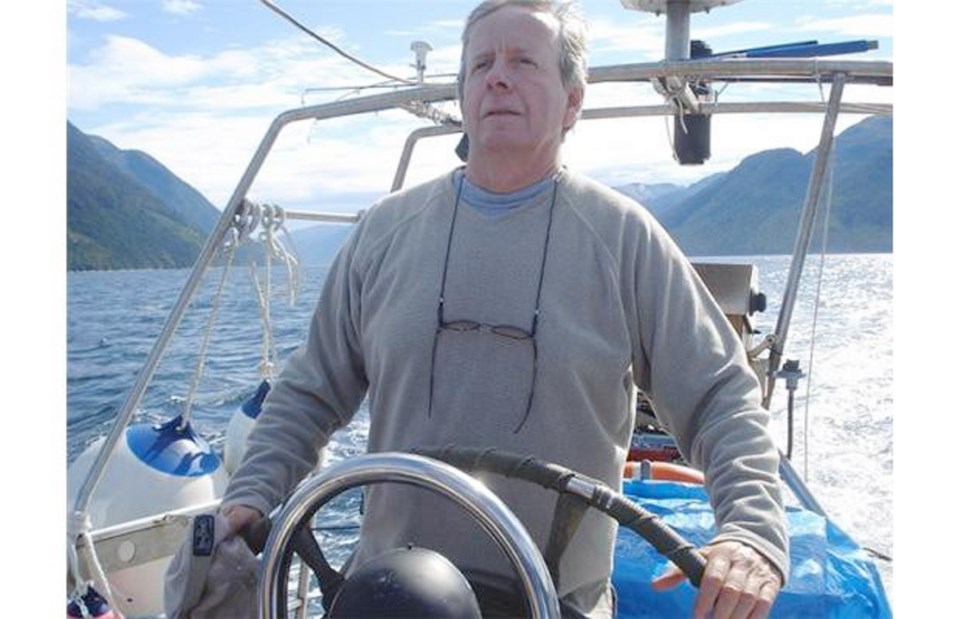VANCOUVER ŌĆö A marine consultant involved in B.C. oil-spill issues for a quarter century says the risks of a tanker oil spill associated with Enbridge Northern Gateway are simply too great for the project to proceed.
Gerald Graham of Victoria-based Worldocean Consulting Ltd. said that calculations based on EnbridgeŌĆÖs research show there is a 8.7-to-14.1 per cent chance of at least one tanker spill greater than 31,500 barrels over a 50-year period, depending on whether the pipeline has a 525,000 or 850,000 barrel per day capacity.
ŌĆ£The consequences of a major oil spill along B.C.ŌĆÖs north coast ŌĆ” could be catastrophic and irreversible,ŌĆØ he says in a submission to the Joint Review Panel studying the Enbridge proposal. ŌĆ£Couple this potentially disastrous outcome with a one-in-seven chance of one or more major spills occurring, and the overall threat level posed by Northern Gateway becomes unacceptably high.ŌĆØ
Graham said two events led him into the oil-spill business: the 250,000-barrel Exxon Valdez supertanker spill in Alaska on March 24, 1989, and the Nestucca accident of Dec. 23, 1988, in which 5,500 barrels bunker C oil leaked from a barge off Grays Harbor, Washington, drifted north into B.C. waters.
He also served as ŌĆ£full-time, in-house consultantŌĆØ to a federal oil-spill review panel, whose 1990 report recommended, in part, double-hulled tankers and that clean-up volunteers be paid for their services and be covered by what were then WorkersŌĆÖ Compensation Board regulations.
B.C.ŌĆÖs ŌĆ£sinuousŌĆØ and isolated coastline, lack of infrastructure and powerful storms ŌĆ£all mitigate against effective oil spill response operations, especially during winter months when the days are short,ŌĆØ and would pose overwhelming challenges to oil-spill responders, Graham said.
At risk are coastal First Nations communities, shellfish harvesting areas, commercial fishing, ecotourism, marine life ŌĆö especially diving birds ŌĆö and protected areas, including potentially Gwaii Haanas National Park and National Marine Conservation Area reserves.
Graham said a ban on crude-oil tankers ŌĆ£has been scrupulously observedŌĆØ in the Queen Charlotte Basin since 1972, consistent with a moratorium on B.C. offshore oil and gas exploration ŌĆö a wise decision in light of the 2010 Deepwater Horizon disaster in the Gulf of Mexico.
While Transport Canada says Northern Gateway tankers can safely access a terminal in Kitimat, Graham said the marine component of the project ŌĆ£is not in fact safeŌĆØ and ŌĆ£as a whole is not in the public interest.ŌĆØ
Graham noted it is the carrier of the oil ŌĆö the tanker owner, not Enbridge ŌĆö who would be responsible for oil-spill cleanup operations and associated costs, with Coast Guard assuming a monitoring role, initially at least.
He added Enbridge has not adequately explained how it would clean up after a bitumen spill, or how much would likely be recovered.
ŌĆ£It is clearly in the long-term public interest of all of Canada to save this relatively pristine environment, the largest area of intact coastal temperate rainforest in the world, from the ravages of unchecked industrial development.ŌĆØ he said.
Todd Nogier, a communications manager with Enbridge, argued in response that more than 1,500 tankers carrying petroleum products have safely used the port at Kitimat from 1982 to 2009.
Northern Gateway is committed to a comprehensive marine safety program, he added, including use of only modern double-hulled tankers, independent B.C. pilots and International Maritime Organization certified tanker crews.
The company also commits to vetting tankers through a third-party agency before gaining entry to port, to escort tugs and tethered tugs, and to a radar system to augment the automatic identification system being installed along coastal routes, he said.
Enbridge is also ŌĆ£committed to developing an emergency response capacity that exceeds 91įŁ┤┤ requirements,ŌĆØ he added.



